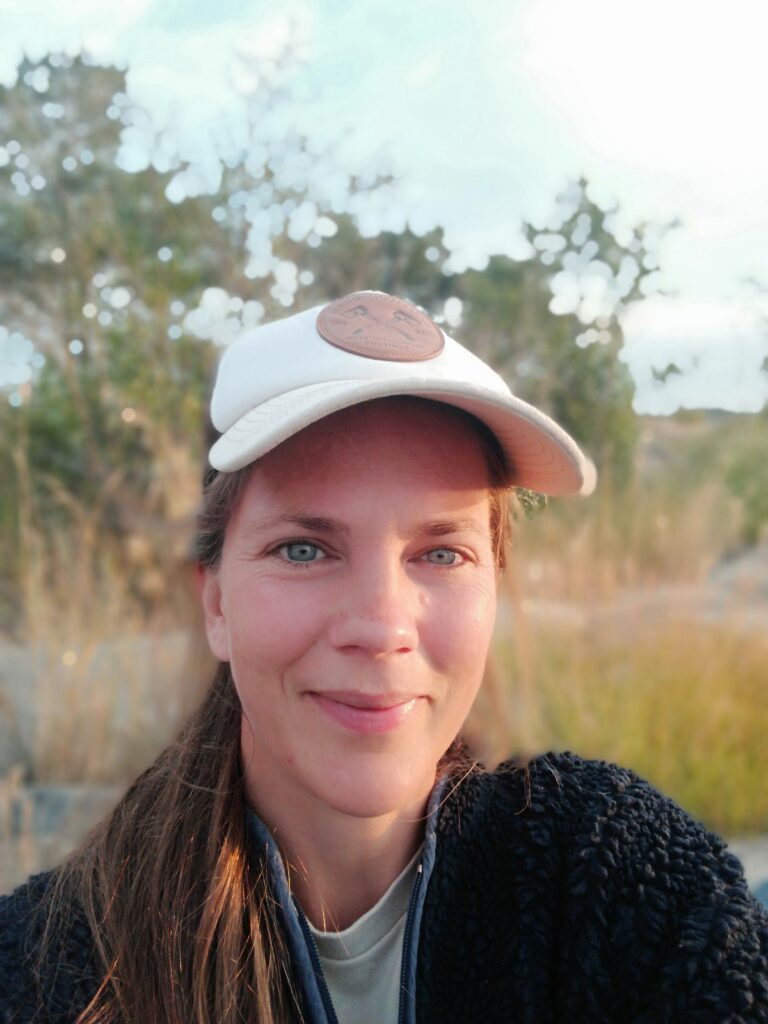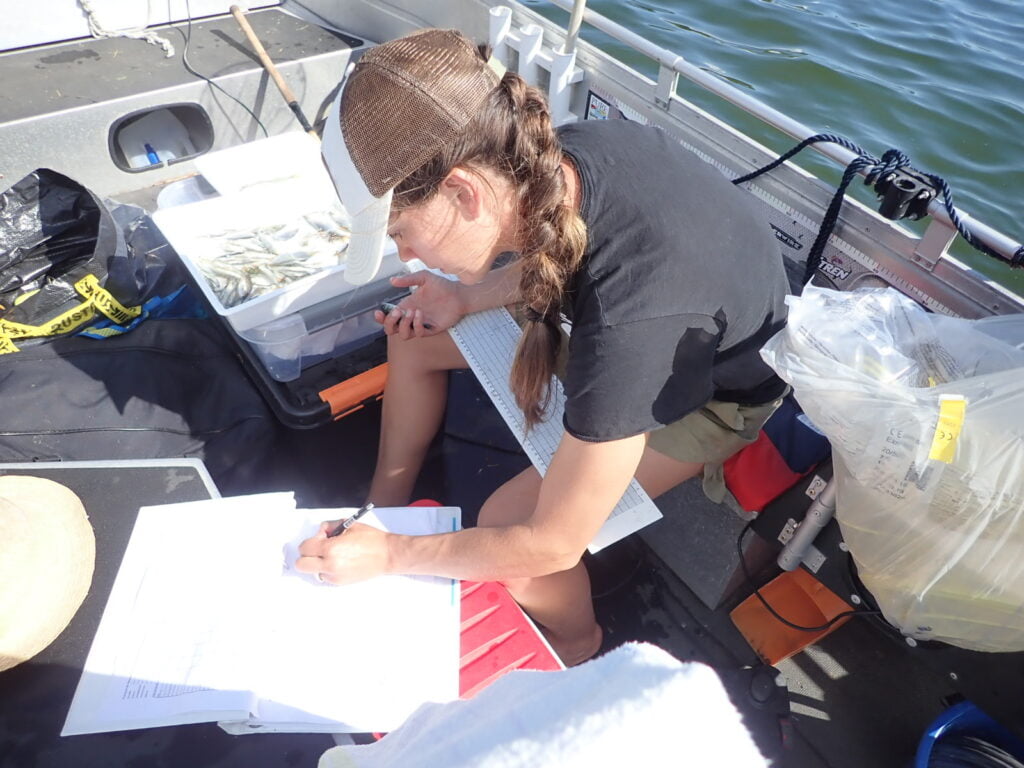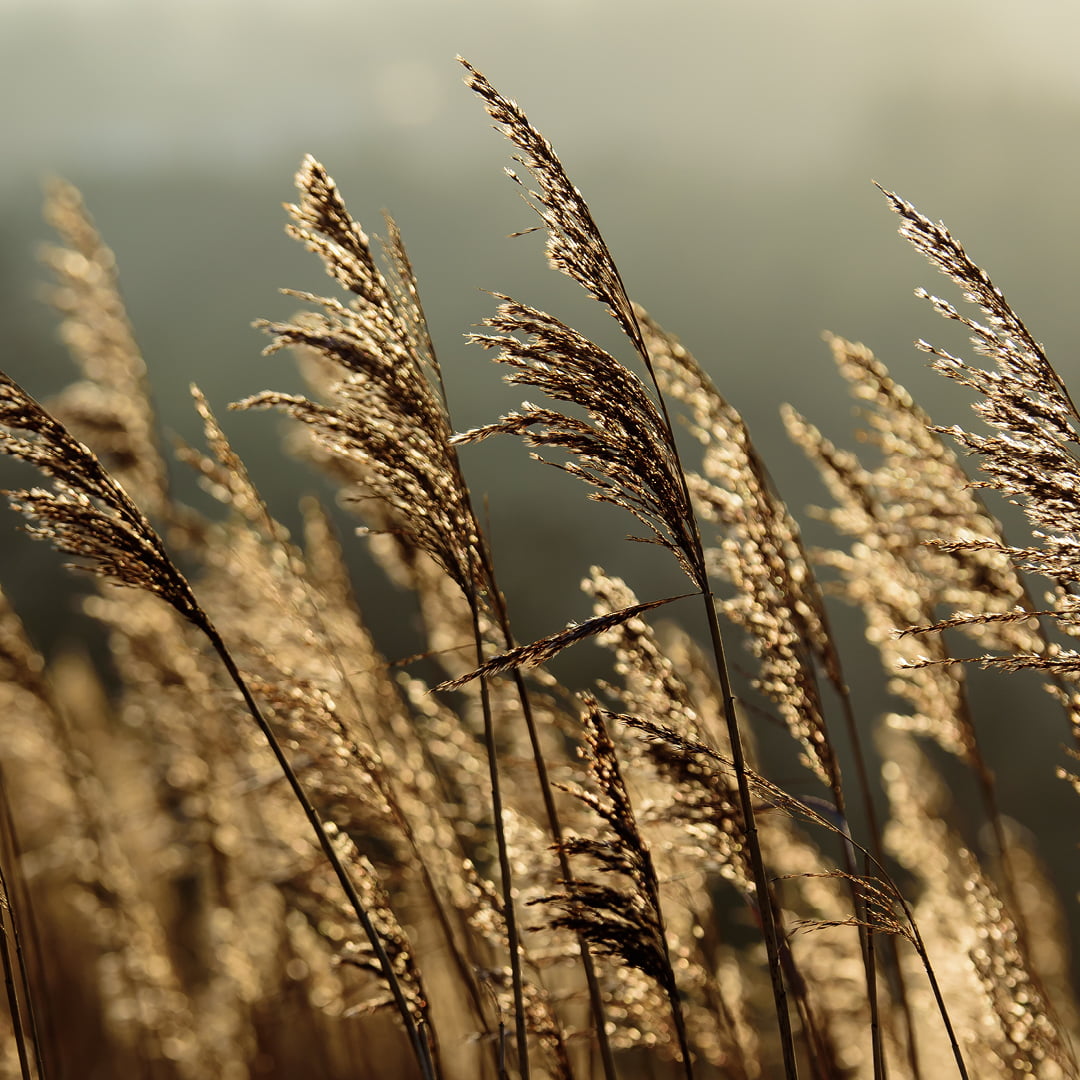The sun is shining on our way to Stockholm University’s Baltic Sea Centre where we are meeting Åsa Nilsson Austin. We’re going to talk about reeds – where some people go to fish for pike, while others wage an annual battle against them to keep them from growing back along the jetty. However, Åsa will never express reeds as something positive or negative – with a PhD in marine ecology – reeds are part of the coastal environment.
Åsa has just started a two-year postdoctoral position where she will study the effects of reed harvesting on ecosystems in shallow bays. Her project is one of several case studies conducted within the Thriving Bays project, which aims to investigate and evaluate measures to restore ecosystems in shallow bays.
– The Baltic Sea has always been close to my heart. We often hear that the inland sea is overgrown and dead, but there are incredibly beautiful environments full of life if you look below the surface, especially in the shallow bays, says Åsa.
Why are reeds so exciting?
– Reeds are common where land meets sea around the Baltic Sea, which means they have a major impact on the environment in shallow bays. At the same time, there is great interest in removing reeds, as they are not always compatible with how we humans want to use the coastline. In my postdoc project, I will investigate the impact on the ecosystem of removing reeds and which methods and approaches are more or less suitable for the environment, says Åsa.

Today there is partial regulation around the removal of reeds. Some reed harvesting carried out privately must be reported to the county administrative board. There therefore seems to be a perception that large-scale reed harvesting can change the Baltic Sea’s coastal ecosystem, but exactly how is not researched.
– Reed has important functions. They bind sediment, absorb nutrients, and reduce water turbidity, capture carbon dioxide, and provide important habitats for birds, fish and small animals. But the distribution of reeds has also increased explosively because of eutrophication and changes in our livestock farming practices. Today, not as many cattle graze along the beaches as in the past, which used to keep the reeds down, says Åsa.

Åsa during an inventory of fish fry and underwater vegetation in bays along the Gävleborg coast last summer. Photo: Henrik Schreiber
Although there is a lack of research on reed, its function in the Baltic Sea and the effects of harvesting, Åsa is not alone in investigating the area. The Swedish University of Agricultural Sciences has recently started a research project – Reed as Feed – which will investigate the possibility of using reeds as feed for horses and cows. There are opportunities for synergies between Åsa’s project and Reed as Feed. Among other things, the time of year when reeds can and should be harvested, both for the sake of the ecosystem and the nutritional value of the reeds.
– Reed has had a much greater role historically. It has been used to build roofs and as food for livestock. Today it is not seen as a resource, but perhaps the projects can contribute to new knowledge about the importance of reeds for the environment and their uses for us humans, says Åsa.
What are you most looking forward to about your project?
– I love being out in the field, analyzing data and looking for answers. Being able to do this within the project Thriving Bays, where restoration methods are tested and evaluated for a better environment, makes the project even more exciting, Åsa concludes.
What are reeds?
Reeds are the largest grass in Sweden. There are several species of reed, but the most common is Phragmites australis, known simply as reed. It favours nutrient-rich environments but is not particularly picky and is found along the coastline throughout the Baltic Sea. Reeds are fast-growing and their explosive spread displaces other plant species, reducing biodiversity. At the same time, reeds can be important habitats for birds, fish and small animals, binding carbon dioxide and sediment to reduce water turbidity.
More about Thriving Bays
The aim of the Thriving Bays project is to try to show that it is possible to improve the environment in shallow bays and to develop knowledge about how this can be done in a cost-effective way. The researchers will investigate and evaluate measures in a number of case studies, and full-scale restoration will be carried out in a few shallow bays along the Svealand coast. Thriving Bays runs until 2027 and is conducted and financed by BalticWaters in close cooperation with, and financial support from, Stockholm University and the Stockholm County Administrative Board. The Swedish Agency for Marine and Water Management (SwAM) has allocated funds to Stockholm University for the implementation of sampling and monitoring in the project bays. A total of just over SEK 45 million is being invested in the project.

